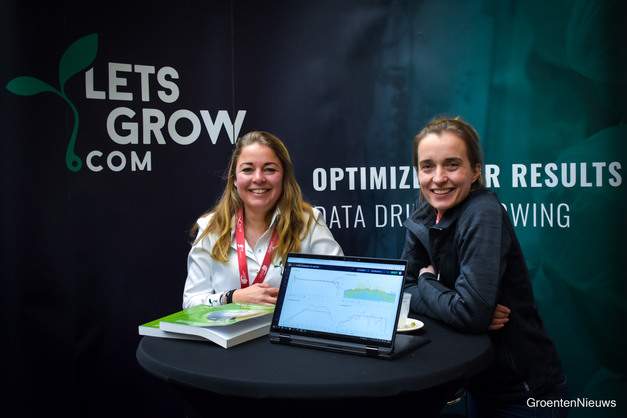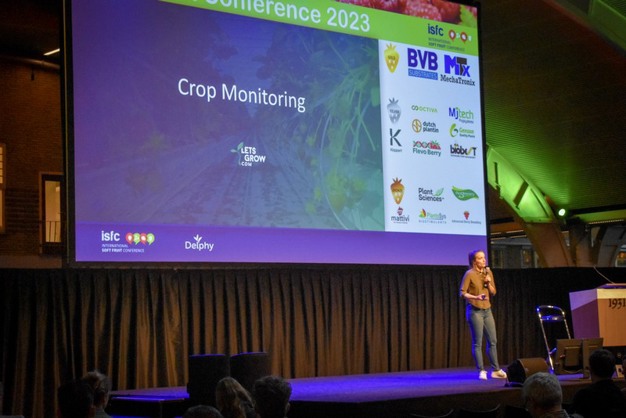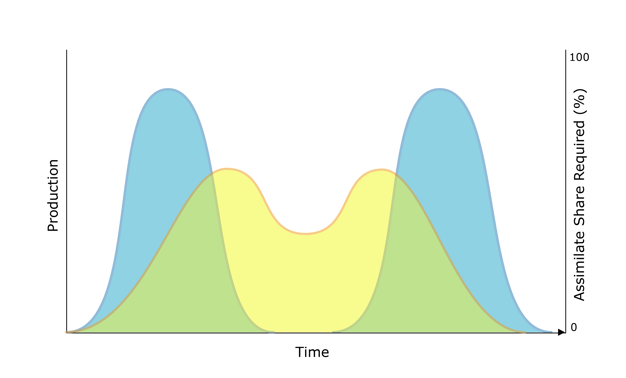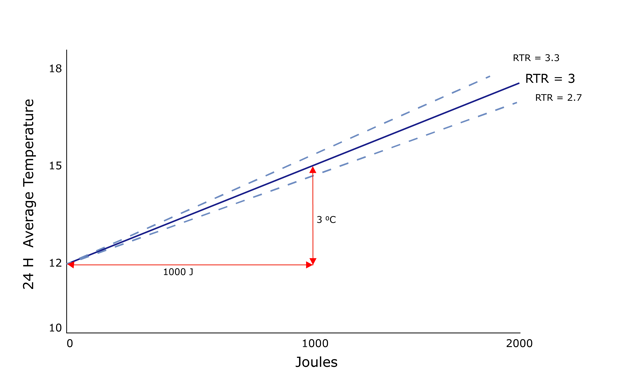Understanding to what extent flushes and production waves in strawberry production can be smoothed out with a climate strategy will make crop planning a lot easier, says Heleen Lugt with LetsGrow.com. The company does extensive research to make this possible with crop data. She sees opportunities to use radiation to temperature ratio (RTR) to do so. “Large fluctuations in flowering and fruiting make it difficult to plan labor and sales. Implementing an RTR strategy avoids having a production and consumption mismatch of assimilates in the plant.”
 Winny van Heijningen and Heleen Lugt with Letsgrow.com
Winny van Heijningen and Heleen Lugt with Letsgrow.com
LetsGrow.com was founded over 20 years ago and offers growers analysis, training, and a data platform to gain insights into what’s happening inside their greenhouse. By monitoring crop parameters such as plant load, growing degree hours, and fruit growth periods, and combining them with situations such as the weather and the market demand, greenhouse production and its relationship with the market can be optimized.
According to Heleen, there are opportunities to use this technology to smooth production in everbearers. “The speed of processes in the plant, like fruit ripening, growth, and transport of assimilates and nutrients, increases with temperature. On the other hand, the amount of light dictates the maximum of assimilates that can be produced and allocated to these processes.”

Although genetics might play a role in the pattern of production flushes, Heleen suggests the steepness of the production flushes largely depends on temperature. “A higher temperature will give a shorter flush with a higher number of fruits ripening at the same time. This means that at the peak of the production flush, the process of fruit ripening will require a larger share of the available assimilates to realize fruits of optimal size and quality.”
If the available assimilates are insufficient, due to low radiation or too high temperature for the level of radiation, the result is poor fruit quality and size, as well as the delay of the leaf and root development and the onset of new trusses. After that, it will take more time before a new flush is reached, Heleen says. “To reach a continuous, smoother production, considering the assimilates available is a requirement.”


RTR ratio
But how do you know the availability of assimilates in the plant? This is where the RTR comes in: the Radiation to Temperature Ratio. The RTR is the increase of the 24h average temperature per 1000 Joules or 10 mol PAR light. The RTR can be implemented by deciding on a base temperature and an increase in temperature with a light sum (figure below).
“Keeping a consistent ratio between the daily light sum and the 24-hour average temperature is the first step in making assimilate availability to all plant processes consistent”, Heleen says. The strategy can be evaluated by looking at the crop. “If fruit ripening is too fast, thus depleting the assimilate pool and hampering plant growth, the temperature increase per 1000 joules can be tuned down. On the other hand, if fruit ripening is too slow and the crop is strong, this factor can be increased.”
“By applying a consistent RTR in practice, we will be able to observe to what extent production curves can be smoothed out and understand if and where we might need corrective pruning actions to stay in balance”, Heleen concludes.
For more information: LetsGrow.com
LetsGrow.com
info@letsgrow.com
www.letsgrow.com
